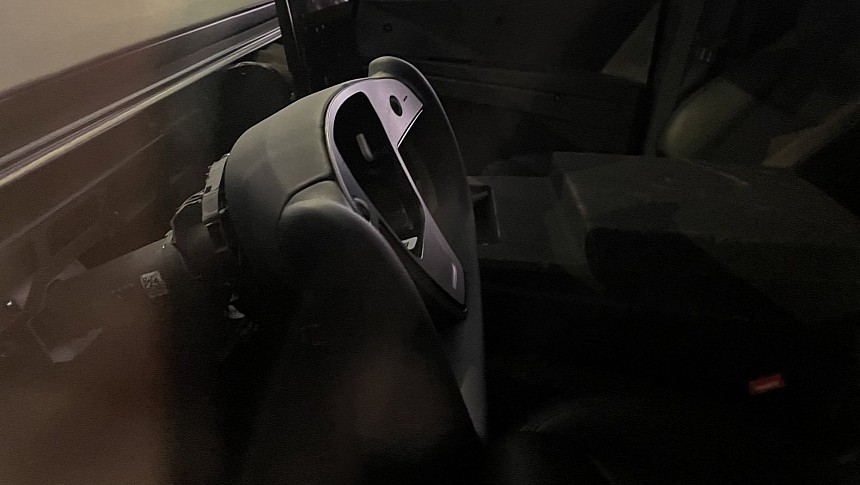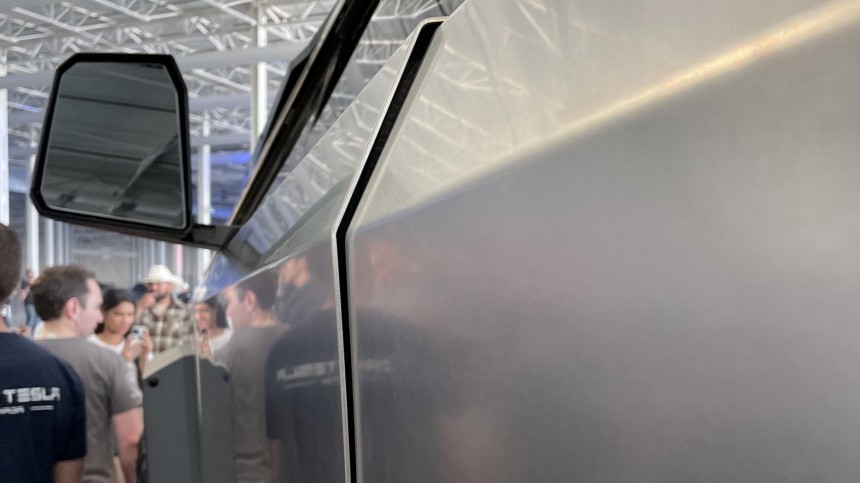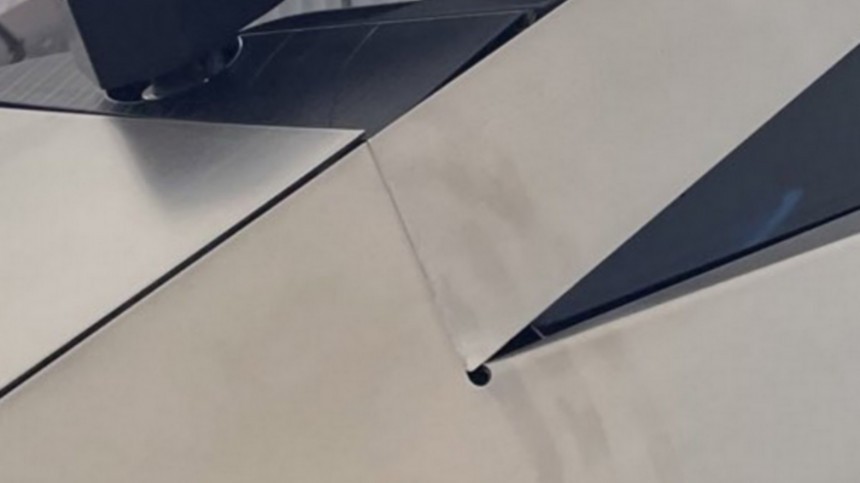It is ironic that similar processes can bring diverse conclusions. Sandy Munro has torn down a few Tesla vehicles and was more often fascinated by the company's engineering solutions than by the flaws he and his team discovered. Another teardown report is not so favorable on Tesla. A Cybertruck assessment also puts the battery electric vehicle (BEV) maker's engineering under scrutiny.
The report came from Astral Codex Ten, a blog about art, harmony, order, and all other meanings the Sanskrit word "rta" can have. In the comments section of an article reviewing Walter Isaacson's biography of Elon Musk, one of the commenters identified only as BlueSilverWave. They said they were an automotive engineer who worked for one of the Big Three (GM, Ford, or Stellantis). Whatever their employer was, it tore down several Tesla vehicles, including an early Model X Founder's Edition.
In this engineer's words, "their structures up to the Model 3 are quite inefficient and don't have great rigidity. The dimensional variation is shocking (far beyond even SBU, IYKYK)." IYKYK means "if you know, you know," which is probably the most precise use this acronym has ever had. In a quick search to learn what SBU means, I found two suitable meanings: "stratigraphic boundary uncertainty" and "sequential build-up." There are probably more meanings, but I obviously don't know what the author meant, only that SBU represents loose dimensional tolerance control.
The engineer did not stop there. BlueSilverWave also wrote that "the hang-on parts are generally relatively poorly performing on their own. They can't touch our structural or powertrain durability tests." They also said that rate and handling are bad, ergonomics fails to meet package targets, and that noise, vibration, and harshness (NVH) level is poor, as well as sound quality. The engineer joked that "we pay JD Power far too much to find out just how bad the quality numbers are (hilariously bad)."
BlueSilverWave stated that the only reason other car companies do not make a Tesla killer is that "our systems and processes prevent us from releasing something that half-baked." The engineer even stated that "if we put out a touchscreen that failed like that, we'd rightly be ridiculed." They were probably referring to the screens without automotive grade that leaked a goo and got yellow over time. Another possibility is that they were talking about the MCUv1, the computer on the Model S and Model X that the company qualified as a wear part to try to escape a recall. The fact is that many things fit the description of "a touchscreen that failed like that," which only reinforces their point.
The engineer's conclusion was that "Teslas… just aren't very good" and that "it really makes you question the customer sometimes." BlueSilverWave added that "Musk's genius is in two very closely related areas: getting investors to give him an unlimited checkbook" and "getting customers to believe they're doing something new, novel, and important, in a way that lets him walk past screwing up things that legacy players get right as an inevitability."
We can't say customers miss that. It is more likely that they prefer to oversee the flaws. I wrote in 2020 about a Tesla fan who said the company sold prototypes, not production vehicles. Ironically, Pete Gruber confirmed in 2021 that this was probably the case with the Roadster, considering how many design flaws the car presented. Buyer complaints are also increasing as Tesla reaches regular customers instead of its own advocates and investors.
As for the engineers, I do not doubt that this is a widespread feeling that they share when they do not have to be diplomatic. Steve Girsky said recently that General Motors considered Tesla resumed to be "just a bunch of engineers playing with laptop batteries." The Nikola CEO worked for GM for seven years as a member of the board and was the company's vice chairman for four years. Another example came from BMW when its CEO said the German automaker would not use massive castings in its cars. According to Oliver Zipse, his company saw "much more efficient ways to build a car body."
If that was not enough, a recent article from Fast Company said the Cybertruck would face several issues in reaching production because of its flat body panels. If you use regular steel to obtain stamped parts, they have to present curves to retain their shape and avoid vibration. Adrian Clarke said the Cybertruck body panels were prone to that, which causes discomfort to occupants and may also bring constructive issues, such as loosening bolts. The problem with the professional car designer's observations is that the Cybertruck adopts a thick stainless steel that cannot be stamped. It may only be folded, creating the first difficulty in manufacturing this vehicle. It may be the case that this harder stainless steel does not vibrate as much as regular steel.
On the other hand, we're yet to understand how this ultra-hard material will behave in crash tests. Clarke believes it will not pass crash and pedestrian impact regulations, which is not unlikely. Current automobiles are frequently criticized for presenting soft body panels compared to classic cars. That's because they are like that on purpose: their exterior panels have the crucial function of absorbing energy so that an impact will not hurt the vehicle's occupants. Tesla has not disclosed a single video of crash test behavior for the Cybertruck so far. Either it adopted more flexible materials, or the electric pickup truck may really face homologation problems.
Lately, we have been hearing that Tesla is giving signs that deliveries for its electric unibody pickup truck are close. The BEV maker closed its Kato Road battery manufacturing facility and excluded the Model Y with 4680 cells from its website. That would be a sign that it would focus on making the Cybertruck. Another one is that some reservation holders are not able to edit configurations anymore. What if it is the other way around and production has been delayed (again)? We'll only know for sure when Tesla sets a delivery date. Even if it is confirmed, Tesla may have decided to deliver prototypes that comply with regulations – which is pretty weird. Its engineering should still be under scrutiny – perhaps more visibly than ever – as Musk's concerns about sub-10-micron tolerances demonstrate.
In this engineer's words, "their structures up to the Model 3 are quite inefficient and don't have great rigidity. The dimensional variation is shocking (far beyond even SBU, IYKYK)." IYKYK means "if you know, you know," which is probably the most precise use this acronym has ever had. In a quick search to learn what SBU means, I found two suitable meanings: "stratigraphic boundary uncertainty" and "sequential build-up." There are probably more meanings, but I obviously don't know what the author meant, only that SBU represents loose dimensional tolerance control.
The engineer did not stop there. BlueSilverWave also wrote that "the hang-on parts are generally relatively poorly performing on their own. They can't touch our structural or powertrain durability tests." They also said that rate and handling are bad, ergonomics fails to meet package targets, and that noise, vibration, and harshness (NVH) level is poor, as well as sound quality. The engineer joked that "we pay JD Power far too much to find out just how bad the quality numbers are (hilariously bad)."
The engineer's conclusion was that "Teslas… just aren't very good" and that "it really makes you question the customer sometimes." BlueSilverWave added that "Musk's genius is in two very closely related areas: getting investors to give him an unlimited checkbook" and "getting customers to believe they're doing something new, novel, and important, in a way that lets him walk past screwing up things that legacy players get right as an inevitability."
We can't say customers miss that. It is more likely that they prefer to oversee the flaws. I wrote in 2020 about a Tesla fan who said the company sold prototypes, not production vehicles. Ironically, Pete Gruber confirmed in 2021 that this was probably the case with the Roadster, considering how many design flaws the car presented. Buyer complaints are also increasing as Tesla reaches regular customers instead of its own advocates and investors.
If that was not enough, a recent article from Fast Company said the Cybertruck would face several issues in reaching production because of its flat body panels. If you use regular steel to obtain stamped parts, they have to present curves to retain their shape and avoid vibration. Adrian Clarke said the Cybertruck body panels were prone to that, which causes discomfort to occupants and may also bring constructive issues, such as loosening bolts. The problem with the professional car designer's observations is that the Cybertruck adopts a thick stainless steel that cannot be stamped. It may only be folded, creating the first difficulty in manufacturing this vehicle. It may be the case that this harder stainless steel does not vibrate as much as regular steel.
Lately, we have been hearing that Tesla is giving signs that deliveries for its electric unibody pickup truck are close. The BEV maker closed its Kato Road battery manufacturing facility and excluded the Model Y with 4680 cells from its website. That would be a sign that it would focus on making the Cybertruck. Another one is that some reservation holders are not able to edit configurations anymore. What if it is the other way around and production has been delayed (again)? We'll only know for sure when Tesla sets a delivery date. Even if it is confirmed, Tesla may have decided to deliver prototypes that comply with regulations – which is pretty weird. Its engineering should still be under scrutiny – perhaps more visibly than ever – as Musk's concerns about sub-10-micron tolerances demonstrate.






















